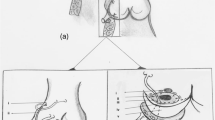Abstract
Transcatheter ruptured sinus of valsalva aneurysm (RSOVA) closure is an alternative to surgery. When a restrictive ventricular septal defect (rVSD) coexists, there are doubts about support for an occluder and persistent left ventricular (LV) dilatation. We compared the outcomes of patients from a single centre with rVSD and RSOVA after surgery or transcatheter intervention in the past 8 years in this study. Location of rVSD did not alter the approach. Compliant balloon interrogation before transcatheter closure was occasionally used to assess significance of interventricular shunt or aortic regurgitation. Procedural success and LV dimensions before and after treatment were analyzed. Seventeen patients with a mean age of 36.64 ± 12.58 years were analyzed. 12/13 catheter procedures (92%) were successful, of whom eight patients had an outlet VSD. rVSD was closed with device in one patient with perimembranous rVSD, but unaddressed in others. Four patients underwent balloon interrogation. Surgery included the single patient who failed intervention. Transcatheter group had more acute symptoms and advanced functional class than surgical group, though not significant. At a median follow-up of 4.5 (1–7.5) years, the mean LV dimensions (50.3 ± 10.1 mm and 50.1 ± 3.1 mm, p = 0.46) were not different in the transcatheter and surgical groups. Mean end-diastolic volumes (110.5 ± 42. 1 ml and 98.5 ± 37.5 ml, p = 0.91) were not significantly different either. Transcatheter RSOVA closure success was not altered by rVSD despite their location underneath the aneurysms, including outlet rVSD with defect in aortoventricular junction. Persistent LV dilatation was not observed after catheter intervention even when the VSD was not closed.





Similar content being viewed by others
References
Angelini P (2005) Aortic sinus aneurysm and associated defects: can we extrapolate a morphogenetic theory from pathologic findings? Tex Heart Inst J 32:560–562
Chu SH, Hung CR, How SS et al (1990) Ruptured aneurysms of the sinus of valsalva in oriental patients. J Thorac Cardiovasc Surg 99:288–298
Choudhary SK, Bhan A, Sharma R et al (1997) Sinus of valsalva aneurysm: 20 years experience. J Card Surg 12:300–308
Hamid IA, Jothi M, Rajan S et al (1994) Transaortic repair of ruptured aneurysm of sinus of valsalva-15 years experience. J Thorac Cardiovasc Surg 107:1464–1468
Kerkar PG, Lanjewar CP, Mishra N et al (2010) Transcatheter closure of ruptured sinus of Valsalva aneurysm using the Amplatzer duct occluder: immediate results and mid-term follow-up. Eur Heart J 31:2881–2887
Cullen S, Somerville J, Redington A (1994) Transcatheter closure of ruptured aneurysm of sinus of valsalva. Br Heart J 71:479–480
Kuriakose EM, Bhatla P, McElhinney DB (2015) Comparison of reported outcomes with percutaneous versus surgical closure of ruptured sinus of Valsalva aneurysm. Am J Cardiol 115:392–398
Xin-jin L, Xuan L, Bo P et al (2013) Modified Sakakibara classification for ruptured sinus of valsalva aneurysm. J Thorac Cardiovasc Surg 146:874–878
Liu S, Xu X, Ding X et al (2014) Comparison of immediate results and mid-term follow-up of surgical and percutaneous closure of ruptured sinus of valsalva aneurysm. J Cardiol 63:239–243
Gu MB, You XH, Zhao XX (2010) Transcatheter closure of perimembranous ventricular septal defects using a novel wire-maintaining technique. Catheter Cardiovasc Interv 75:66–71
Galeczka M, Glowacki J, Yashchuk N et al (2019) Medium- and long-term follow-up of transcatheter closure of ruptured sinus of Valsalva aneurysm in Central Europe population. J Cardiol 74:381–387
Yang K, Wei MD, Geng WL et al (2018) Safety and efficacy of percutaneous closure of ruptured sinus of Valsalva aneurysm. EuroIntervention 14:e1288–e1294
Xiao JW, Wang QG, Zhang DZ et al (2018) Clinical outcomes of percutaneous or surgical closure of ruptured sinus of Valsalva aneurysm. Congenit Heart Dis 13(2):305–310
Zhong L, Tong SF, Zhang Q et al (2014) Clinical efficacy and safety of transcatheter closure of ruptured sinus of valsalva aneurysm. Catheter Cardiovasc Interv 84:1184–1189
Acknowledgements
None.
Funding
None.
Author information
Authors and Affiliations
Corresponding author
Ethics declarations
Conflict of interest
None of the authors have any conflicts to declare.
Ethical Approval
The manuscript and study complies with ethical standards specified by the institutional research and ethical committee of Madras medical mission.
Additional information
Publisher's Note
Springer Nature remains neutral with regard to jurisdictional claims in published maps and institutional affiliations.
Rights and permissions
About this article
Cite this article
Mumtaz, Z.A., Sagar, P., Rajendran, M. et al. Transcatheter Versus Surgical Closure of Acute Ruptured Sinus of Valsalva Aneurysms with Associated Ventricular Septal Defects. Pediatr Cardiol 43, 1494–1501 (2022). https://doi.org/10.1007/s00246-022-02873-5
Received:
Accepted:
Published:
Issue Date:
DOI: https://doi.org/10.1007/s00246-022-02873-5




